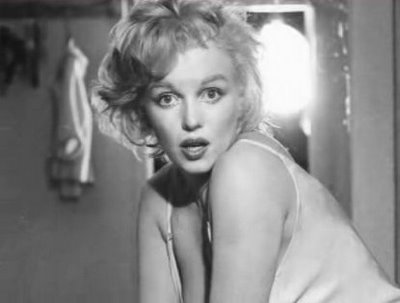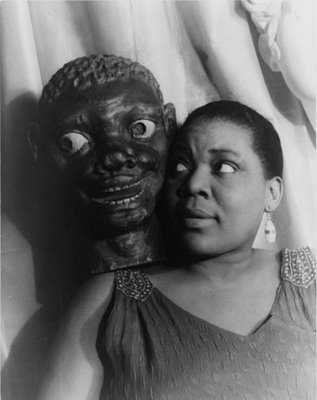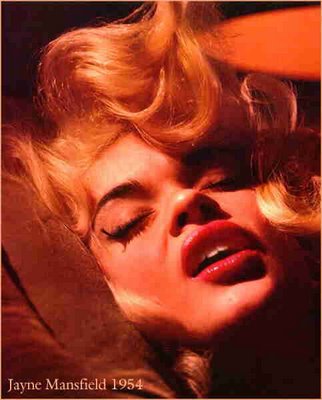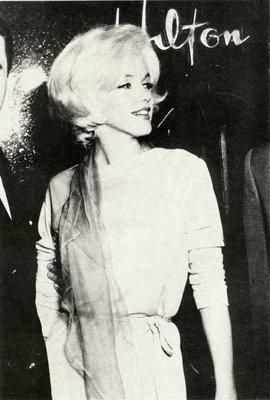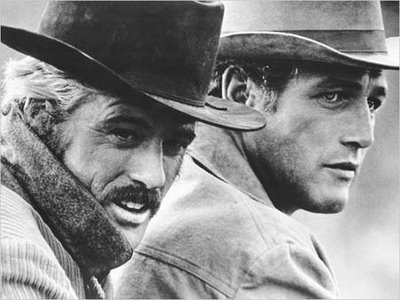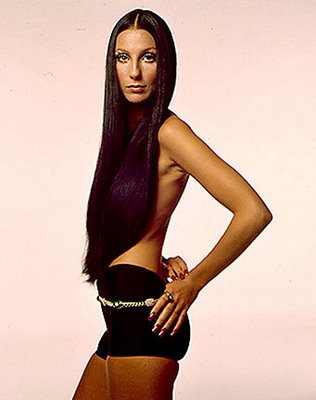
From Dean Ferguson & Johnny Lauderdale Danza ...After more than three decades of hits, an artist likeCher could be expected to rest comfortably on thelaurels of a catalog that already includes some of themost indelible pop anthems of all time. Think again.Somehow, as a recording artist, she’s managed toremain relevant, reinventing herself time and timeagain. And now she’s at it again. Her new album,Believe, is a knockout, with the blockbuster titletrack currently exploding on both sides of theAtlantic (it debuted at #1 on the UK pop chart!).Produced primarily by the METRO team’s Mark Taylor &Brian Rawling (with an able assist from Junior Vasquezand Todd Terry) the album has USA Today proclaimingthings like “This is not your parents’ Cher”. That, ifanything, is an understatement. With the album justhitting store shelves as we go to press, the buzz isunprecedented.The remixing talent roster on the first single alonereads like a Who’s Who of cutting edge club fare(Almighty’s Martyn Norris & Jon Dixon, Xenomania,Wayne G, Club 69), yet it’s still, unmistakably, aCher record.The press, both industry and popular, have been quiteenthusiastic in their coverage of the new album, eventhough Cher herself told us that she’s long sincestopped paying attention to such matters. She had notread the Entertainment Weekly review (“I don’t readthose things”) when we spoke to her for this story,but she couldn’t help laughing when we pointed out howreviewer Beth Johnson had closed with the line ‘yougotta love how her Cher-ness shines’. And indeed itdoes. “I want to remain relevant and do work thatstrikes a chord…but at the same time, I don’t want tomake a record with too many intentions beyond pleasingmy fans.” We sat down recently with Cher in her NewYork hotel suite and, for the better part of an hour,talked with her about the new album, and the ups anddowns of her incredible career in music. First,though, a little background:JUST THE FACTS: Born Cherilyn LaPierre on May 20, 1946in El Centro, California, Cher got her start in theindustry working with future husband Sonny Bono as abackup singer for producer Phil Spector. After anunsuccessful attempt at recording as a duo under thename “Caesar & Cleo”, Cher recorded her first solotracks under the names "Bonnie Jo Mason” and“Cherilyn”. Then, in 1965, as Sonny & Cher, the duo’sfortunes skyrocketed with the slew of hits thatstarted with “I Got You Babe”. They were married atthe time, divorcing in 1974 just as their weekly CBStelevision series was at its peak. Though she reunitedprofessionally with Bono briefly in 1975, Cher wasalready involved in an expanded solo career.THE BEAT GOES ON: By 1977, a subsequent two-yearmarriage to musician Greg Allman had also ended, andso had her 1970s pop chart hit streak. Despite areturn to the Top Ten in 1979 with “Take Me Home”, itwas evidently the right time for Cher to explore othercreative avenues. She went on to emerge as one of themost acclaimed film actresses of the 1980s, winningthe Best Actress Oscar in 1987 for Moonstruck. Herheart, though, was never far from the music.“Acting is like having a party at your house, andhaving to do all the work”, quips Cher on thepublicity blurb that accompanied pre-release presscopies of her new Warner Brothers album, Believe. Shegoes on to describe the difference between her twoprimary career paths by adding, “Music is like beingat someone else’s house. I don’t have to worry aboutit. I just get caught up and carried away”.THE PEAKS: A unique blend of panache and tenacity hasalways kept Cher’s musical inclinations sounding freshand vital when many of her contemporaries falter. Towit, her earliest solo hits (circa 1966 and 1967)shared chart space with similarly successful singlesfrom pop divas Petula Clark, Nancy Sinatra, Lulu, andBobbie Gentry. By the 1970s, however, those otherladies had become, in terms of pop music relevance,little more than archival footnotes while Cher’s hitstreak began a second faze in the wake of thetremendous popularity of The Sonny & Cher Show. From1971 to 1974, when high-profile chart competitorsincluded Roberta Flack, Carole King, Helen Reddy,Gladys Knight, Melanie, and Carly Simon, Cher wasreestablishing her own Top 40 credentials with hitslike “Gypsies, Tramps & Thieves”, “Half Breed” and“Dark Lady”. She re-defined herself once again as thedecade closed, emerging in 1979 at the height of thedisco craze with the timeless dance anthems “Take MeHome” and “Hell On Wheels”. The latter track, featuredon the Roller Boogie soundtrack, effectively capturedthe innocuous pleasure of the phenomenal late 70sroller-skating craze, which Cher herself had a hand inpopularizing. Cher’s Billboard chart sorority sistersat that point in time included Gloria Gaynor, AmiiStewart, Donna Summer and Anita Ward.Fast forward to 1988, when pop music’s leading ladiesincluded Debbie Gibson, Expose, Tiffany and PaulaAbdul. For Cher, it was time to get down to businessonce again. Newly signed to Geffen Records, Chersucceeded in establishing a new identity as a seriousrock and roller. It was a crown that she’d worked longand hard to capture, and with it came her mostimpressive string of hits to date. Michael Bolton, JonBon Jovi, Desmond Child, and Richie Sambora (of BonJovi fame) produced her first Geffen album, simplytitled Cher, and it yielded her 13th, 14th and 15thTop 40 Billboard chart hits. First up was “I FoundSomeone”, a scorching rock-and-roll ballad (originallyrecorded by Laura Branigan) that subsequently becameCher’s first top ten pop hit in over eight years.It was followed in quick succession by the BonJovi-penned smash “We All Sleep Alone” and thechart-topping “After All”, a duet with Chicago’s PeterCetera. She followed the Cher album a year later withan equally prolific set called Heart Of Stone. Inaddition to the title track, which became hereighteenth Billboard Top 40 hit, this album yieldedthe top ten singles “Just Like Jesse James” and “If ICould Turn Back Time”. The latter track, aninternational #1written and co-produced by DianeWarren, quickly became one of Cher’s biggest hitsever.Her 19th Billboard Top 40 solo hit came a year laterwith “The Shoop Shoop Song (It’s In His Kiss)”, ahighlight from the Mermaids soundtrack, a film inwhich she also starred. Though she’d rack up hits #20(“Love & Understanding”) and #21 (“Save Up All YourTears”) before the year was through, it was evidentlytime to turn the page once again.THE VALLEYS: Six years would pass before the releaseof her next album, revealing yet another side of Cherboth to herself and to her insatiable public. Beforeentering this current phase, however, it’s worthtaking a moment to note some of the more intriguing‘in-between’ projects---recording projects, thatis---that have escaped all but the most die-hard Cherfans’ attention. Over the years, these have includedsome of her most interesting recordings of all.A number of ill-fated projects for Warner Brothersthat began when her tenure at MCA Records ended in themid-1970s have gone on to become not only cultclassics, but highly-prized collectibles as well. Casein point is an album called Stars, featuring anamazing rendition of “Geronimo’s Cadillac”. Althoughit’s been out of print for years, it is generallyconsidered one of her best, and demand for pristinecopies of the album remains high. Equally rare is anincredible single called “A Love Like Yours” from thesame period that reunited Cher with producer PhilSpector (with whom Sonny & Cher had started over adecade before). Spector tested, but never released,this particular single with the intention of using itto launch his own, short-lived Warner Brothersspecialty label. It was a one-off duet on which Cherwas teamed with Harry Nilsson (“We were just coming into do backup…the song was supposed to be for JohnLennon”). Their spur-of-the-moment recording, however,turned out to be brilliant (it contained one of thecatchiest choral hooks ever recorded) but legalcomplications prevented it from ever hitting themarket. Both the single and the Warner/Spector vanityimprint disappeared quickly and were forgotten.Cher’s only studio venture with second husband GregAllman is also part of the long lost Warner Brotherscache. Though the album they recorded together, Allman& Woman, is decidedly unremarkable in terms of itsbeing any sort of recording landmark for Cher, itcontains a deliciously boisterous love song called “ILove Making Love To You” that holds up incredibly wellalmost two decades later. Allman basically sleepwalksthough his part, but Cher’s enthusiasm is soirresistibly infectious that she all but carries thetrack by herself. If the Allman & Woman set was meantto bolster Cher’s rock & roll credibility, itbackfired. Her own fans’ response was lukewarm atbest, and the Allman contingent (both press andpublic) considered the project downright blasphemous.The press was only slightly kinder to Cher’ssubsequent pairing with Meat Loaf on “Dead Ringer ForLove”, the controversial title track of the latter’swidely panned second album. Over the years, Meat Loafhimself has steadfastly defended his choice of Cherfor the ‘girl part’, insisting then and now that shewas the only one capable of delivering the power andpassion that the track required. Dead Ringer, thefollow-up to Meat Loaf’s groundbreaking Bat Out OfHell album, is only now getting the respect itdeserves.Next came the Casablanca years. Cher’s one and onlytop ten hit between 1974 and 1988 was the title trackfrom the first of her three Casablanca albums, Take MeHome. Though the track and the album both proved to bewildly popular, Cher was reportedly less than fond ofthe finished product (“Not true”, she told us, butmore on that later). The final two albums in herCasablanca deal, the uneven pop set Prisoner Of Loveand an ambitious, self-titled album from aCher-fronted rock & roll band called Black Rose, wereboth commercial disasters.When her next album, the brilliant I Paralyze set(released on Columbia in 1982) also failed to click,Cher told us that she thought her recording career wasdefinitely over. It would be six years before anyonecould persuade her to give it another try, and eventhen she did so reluctantly. Still, deep down, partof her has always been ready to Believe. She wasanxious to talk about her new album, so that’s whereour conversation began.We started by asking her what made her decide to do adance album this time. “You know, I love this album(and) I’m very proud of it but I can’t take any of thecredit. It wasn’t my idea at all. Rob Dickens, thehead of Warner Brothers-UK, said to me, ‘Cher, I thinkyou should do a dance album’ and at first I resistedit. I said ‘oh...ah…No, I don’t wanna do that’.”Fortunately, Dickens persisted. He persuaded her to atleast listen to some of the new songs he’d found, andshe agreed. “He sent me these songs…and there were twothat I really loved. One was “Dov’e L’amore” and theother was “Strong Enough”,” both of which were writtenby the METRO team. “He then suggested that I come toEngland to work with these boys, and so I did”.The ‘boys’ in question here are, as we mentionedbefore, the METRO team leaders, Mark Taylor and BrianRawling, who produced most of the album, andsongwriter Paul Barry. “It’s hard to explain how METROworks. I mean, it’s like…‘What is METRO?’ Brian runsthe office, and keeps everybody enthusiastic. Mark isthe engineer, and Paul writes the songs. Paul justkept writing songs (and) Mark and I would recordthem…in the tiniest studio I’ve ever seen!” As therecording sessions continued, the album’s focus beganto take shape. “Before I knew it, it had turned into adance album”.The first song actually recorded for the album was“Strong Enough”, and it is definitely one of Cher’spersonal favorites. “Rob told me that he said to theboys ‘I’m gonna give you a chance to produce Cher. Iwant you to write a song for Cher…you know, a ‘Chersong’, and “Strong Enough” is the song they came upwith”. That track, in particular, has the kind ofundeniably catchy, retro-disco flavor that Cherherself favors when she goes out to a club. “If I’mgoing to go dancing, I wanna go on a night whenthey’re playing ‘70s hits, because that’s my favoritemusic to dance to”. As far as the new album isconcerned, Cher likes the fact that several tracksseem to capture that same disco-era essence. “It’s notthat I think this is a ‘70s album…but there’s athread, a consistency running through it that I love.It’s more obvious on certain tracks than it is onothers, especially “Strong Enough”.” She told us thatMark had tried approaching the track from severaldifferent, more contemporary angles before admitting,begrudgingly, that it worked best when they did it theway Cher suggested, meaning “the way they did it inthe old days”. That meant real strings and thedramatic, a capella-into-slam dunk disco punch ofclassic hits like “I Will Survive”. “That was the onlyway to get into that song. The boys tried a wholebunch of different ways to do it (but) I told them itwasn’t gonna work”. Cher says that they finally “bitthe bullet”, and did it her way. The results, ofcourse, speak for themselves, with “Strong Enough” isemerging as the near-universal choice for the nextsingle release in Europe.Surprisingly, Cher said that a different track wouldprobably be selected as the next American single.“Music seems to be a little different over here…so Icouldn’t say for sure what the next single might be.But “Believe” was just the obvious choice for thefirst single everywhere. It’s the best song on thealbum”. The evolution of the album’s chart-chargingfirst single, with its infectious, sing-a-long chorusand ear-catching vocal flutter, is a story in itself.“We had done the song, and we loved the chorus, butthe verse was just s—t”. Later, while soaking in abathtub, Cher herself came up with the line ‘I’ve hadtime to think it through, and maybe I’m too good foryou’, and suddenly the whole song made sense.Additionally, Cher told us that the track’s uniquevocal hooks were inspired by a similar sound effectthat she’d heard on an album by Roachford.She met with some initial resistance, however, whenshe tried getting the boys to experiment with her ownvocal tracks in the same way. Finally, they relented.“Mark got busy (in the studio) and first he added thecompression to the first part of the vocal so that itsounds kind of like its coming out of an old radiospeaker. And then we started screwing around with thepitch machine (for that ‘fluttering’ vocal effect). Weput that on, looked at each other and said, ‘That’sit!”Cher knew instantly that she had nailed it. “From thatmoment on, it was my favorite song. I said ‘I’mcalling the album Believe, and “Believe” is going tobe the first single.” Still, others involved neededsome convincing. Rob Dickens, for one, tried his bestto dissuade her, arguing that to him it just didn’tsound like a Cher record.“Rob tried to talk me out of using ‘that weird thing’on my voice, and finally we all had a big meeting.”Cher sat down with with everyone involved in theproject and said, “Alright, you guys. I understandwhat you’re saying…I understand that at first itdoesn’t sound like me--but eventually it does—and, ifyou want to change the mechanical stuff…I want you toknow that it will be over my dead body’. We nevertalked about it again.”Suffice it to say the ‘mechanical stuff’ stayed, andlast month the single debuted at #1 on the UK popchart. “It had been 33 years since the last time thathad happened to me (with Sonny & Cher’s “I Got YouBabe” in 1965)…. I was pretty excited. We were at aBlockbuster in Italy when we heard”. Her manager,Billy Sammeth, was waiting in the car when Cher gotthe call on her cell phone. “I was banging on thedoor, going ‘We’re #1! We’re #1!’ but he couldn’t hearme.” She continues, saying that he just went‘yeah-yeah-great’, but still had no idea what she wastrying to tell him. “Then he understood, and we wereall jumping around. The people around us probablythought we were insane…but eventually they understoodwhat we were talking about. Then everyone was jumpingaround. It was great.”With “Strong Enough” already locked up as the next UKsingle, we asked again what she thought the nextAmerican single might be. Cher said that it might be“Dov’e L’amore”. Interestingly, “Dov’e L’amore” is aSpanish song with Italian lyrics, and we asked Cherhow that came to be. “When the boys wrote “Dov’e”,there was an Italian restaurant next door---thereweren’t any Spanish restaurants around---and they justkept running to the guy in the restaurant who spokeItalian and said ‘tell me how to say this’, and ‘howdo you say that?’, and that’s how they wrote it.” Shelaughs, continuing. “And I love the Gypsy Kings, so wegot one of the Gypsy Kings to do the guitar work.” Wethen asked if what we’d heard about Madonna’s fondnessfor the track was true. “When Madonna heard the song,she called Liz (Rosenberg, of Warner Brothers-US) andthen Liz called me. She said that Madonna insistedthat “Dov’e” had to be the next single and that, if itwas, she wanted to direct the video.” Otherpossibilities include “All Or Nothing” (“I really lovethat song”), “Taxi Taxi” (a thumping, Chicago-styledhouse track produced by Todd Terry), and the set’slone Junior Vasquez contribution, “The Power” (“It’skind of a strange song, but I really like it. There’sjust something about it…”).The new album also contains a reworked version of her1989 hit “We All Sleep Alone”, and we were curious asto why she chose to revisit that particular track.“Because (at first) they were talking about re-doing‘Bang Bang”, and I was just soooo over ‘Bang Bang’---Imean, I’d just done it and done it (so many times)that I didn’t want to do it again.” Then herhairdresser suggested reworking “We All Sleep Alone”into a dance song and she liked the idea. “I sent itto Todd (Terry), and he said, ‘oh yeah, I’d muchrather do that…and so we did it.”The original version of “We All Sleep Alone” comesfrom the period in her recording career that Chersays, prior to now, had always been especiallysignificant to her. We asked her about that period,her Geffen label ‘hit years’, and specifically 1989 to1992. “It was my favorite time as a singles artist,because I was getting to do songs that I reallyloved…. songs that really represented me, and theywere popular!I loved ‘I Found Someone’, ‘If I Could Turn BackTime’, ‘Main Man’…. It was really an exciting time forme. I loved working with Jon (Bon Jovi) and Richie(Sambora), and I loved getting back into the musicbusiness after so long.”Although this period produced more consecutiveBillboard Top 40 hits than any other in her career,Cher initially resisted going back into the studio.She eventually succumbed however, to thegentle-but-persistent pressure of producer JohnKoladner and her long-time friend David Geffen.“I had just come off three movies…I mean back to back,literally, without any days off. I did Witches OfEastwich, Moonstruck, Suspect, and then the album,just like that. John Koladner was so up (for thealbum). He was just so great. I was supposed to recordbefore I started the movies…and he waited for me”. Shesmiles softly, recalling how she kept trying to talkhim out of it. “I said, ‘Why are you pressing me withthis? Why are you bothering? Nobody’s going to beinterested. My singing days are over…they’re OVER!’but he just said ‘no, no, no…’ and kept pushing.”We then asked how she and Koladner had met in thefirst place, and she recalled their auspiciousintroduction with a hearty laugh. “I remember thefirst time I saw him.I was at some music awards thing with David (Geffen),and John was sitting five or six rows in front of us.He just kept turning around and looking at me.Finally, I said to David, ‘Who in the f—k is that guy,that weird guy? And why is he looking at me?’. Davidsaid ‘Oh, that’s John Koladner. He works for my labeland blah-blah-blah-blah. Then, all of a sudden, Davidsays ‘You know, John thinks that you need to besinging again…”.Though Cher had been linked romantically with DavidGeffen by the press at one point, he’s actually atreasured friend. Talking about him prompted us to askif working with a husband or lover enhanced orhindered a recording project. “Oh, I think itdefinitely enhances it. I’ve worked with husbands,lovers…and I just worked with my son (on a cover of“Crimson & Clover” that son Elijah Blue produced foran upcoming Sire Records soundtrack project). As aproducer, Cher says that her son was especially fun towork with. “He was so sweet…he said, ‘Mom, don’t worryabout it, just relax, everything’s gonna be fine’…andit was!” Cher is also fond of the album she recordedwith Elijah’s father, Greg Allman. “I loved being inthe studio with Gregory. I loved making that albumwith him…but it didn’t stand a chance, did it? I mean,everybody hated that we were together, didn’t they?The album didn’t stand a chance.”When prompted by some ten-second sound bites weprovided (on a miniature boom box that we brought withus to the interview), Cher took the time to look backat some of the other ‘hits that got away’. We startedwith a snippet of “I Paralyze”, and proceeded fromthere. Listening intently, she begins singing alongwith herself and says, smiling broadly, “I’m sorry,that was just such a good song! I loved ‘IParalyze’…RuPaul said that it belongs on my next‘Greatest Hits’ album” (Note: there is one,forthcoming, from Geffen). Written and produced byJohn Farrar (the man responsible for OliviaNewton-John’s “Physical”), this 1982 Columbia labelrelease is one that Cher says she would like tore-record someday. Ditto “Rudy”, a Phil Spector-styledpop ditty from the same period that somehow fellthrough the cracks in spite of an enthusiastic singlereview in Billboard. “That was a good one…I rememberliking ‘Rudy’ a lot. I had a lot of fun recording it.Like ‘Turn Back Time’, this is the kind of song thatpulls you up. I think ‘Believe’ is kind of like thattoo.Cher continues, reminiscing about about other personalfavorites of hers. “I loved making the Stars album(Warner Brothers, 1977). I loved ‘Geronimo’sCadillac’. I wish I’d been a better singer thenbecause I would have done a better job on it. I hadthe emotion, but I didn’t quite have the control thatI needed. Also, I just got so tired of people makingfun of my vibrato that I worked really hard with myteacher to control it, you know? To be able to get ridof it at will.” Other songs that, popular or not,remain close to Cher’s heart include “Save Up All YourTears” (“Nobody liked it but me”) and “Do What YouGotta Do”, which she recorded with Greg Allman.“There’s a song that Sonny wrote for me called “WhereDo You Go”---I loved that song. Another reallyfavorite favorite record that I did was with Genie(Simmons), a Kiss song called ‘A World WithoutHeroes’."


